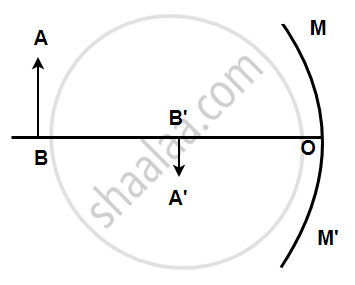Advertisements
Advertisements
प्रश्न
A ray of light strikes a plane mirror at an angle of 40° to the mirror surface. What will be the angle of reflection?
उत्तर
he angle of reflection is 500, in accordance with the first law of reflection, which states that the angle of incidence is equal to the angle of reflection.
Here, the angle of incidence = 90o - 40o = 50o( the angle of incidence is the angle between the incident ray and the normal).
APPEARS IN
संबंधित प्रश्न
Explain the following term related to spherical lenses:- optical centre
The shiny outer surface of a hollow sphere of aluminium of radius 50 cm is to be used as a mirror:
What will be the focal length of this mirror?
The diverging lens in part (a) is replaced by a converging lens also of focal length 100 mm. The object remains in the same position and an image is formed by the converging lens. Compare two properties of this image with those of the image formed by the diverging lens in part (a).
A coin placed at the bottom of a vessel appears to be raised when water is poured in the vessel.
What do you understand by the focus and focal length of a spherical mirror? Show them on the separate diagrams for each of a concave mirror and a convex mirror.
Draw a ray diagram to show the formation of image by a concave mirror for the object beyond its centre of curvature. State three characteristics of the image.
AB is the object, A'B' is the image, and MM' is the position of the mirror. Complete the ray diagram showing the formation of the image and find the focal length of the mirror.

The distance from the pole to the focus is called ______.
A converging lens of focal length f is placed at a distance 0.3 m from an object to produce an image on a screen 0.9 m from the lens. With the object and the screen in the same positions, an image of the object could also be produced on the screen by placing a converging lens of focal length.
